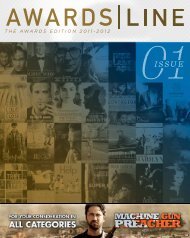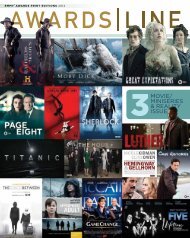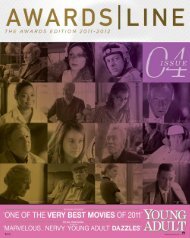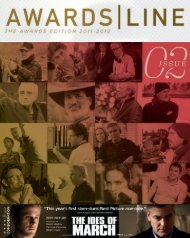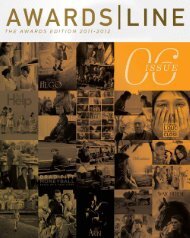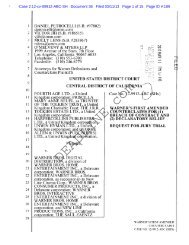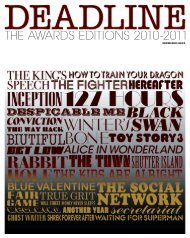Preliminary Injunction
Preliminary Injunction
Preliminary Injunction
Create successful ePaper yourself
Turn your PDF publications into a flip-book with our unique Google optimized e-Paper software.
1<br />
2<br />
3<br />
4<br />
5<br />
6<br />
7<br />
8<br />
9<br />
10<br />
11<br />
12<br />
13<br />
14<br />
15<br />
16<br />
17<br />
18<br />
19<br />
20<br />
21<br />
22<br />
23<br />
24<br />
25<br />
26<br />
27<br />
28<br />
a. The Purpose and Character of the Use.<br />
The first fair use factor focuses on the purpose and character of the use,<br />
“including whether such use is of a commercial nature or is for nonprofit<br />
educational purposes.” 17 U.S.C. § 107(1). The XXX Adaptation plainly was<br />
produced for commercial gain, which weighs against fair use. See Abend, 495 U.S.<br />
at 237 (motion picture adaptation of story was released for commercial gain); Dr.<br />
Seuss Enters., L.P. v. Penguin Books USA, Inc., 109 F.3d 1394, 1401 (9th Cir.<br />
1997) (defendants’ commercial use, a book about the O.J. Simpson trial, cut<br />
against fair use). Defendants cynically have sought to capitalize on the worldwide<br />
success of the Fifty Shades Trilogy by hastily producing a porn movie version.<br />
Indeed, they have boasted on Twitter that the XXX Adaptation is their “biggest<br />
film of the year” and has been the number-one bestseller on defendant Right<br />
Ascension’s Adult DVD Empire website and the Adult Video News list of<br />
bestselling adult films. See Kohn Decl., Exs. 24, 31.<br />
Under the first factor, courts also consider whether the new work is<br />
“transformative” of the original, asking whether it “adds something new, with a<br />
further purpose or different character,” altering the first “with new expression,<br />
meaning, or message,” rather than merely superseding the object of the original.<br />
Campbell v. Acuff-Rose Music, Inc., 510 U.S. 569, 579 (1994); Dr. Seuss, 109 F.3d<br />
at 1400. Adapting a copyrighted work into a new medium of expression – turning<br />
a short story into a play, or a novel into a motion picture – is not “transformative”<br />
for purposes of the fair use analysis. See Napster, 239 F.3d at 1015; Castle Rock<br />
Entm’t v. Carol Publ’g Group, 150 F.3d 132, 143 (2d Cir. 1998).<br />
Although parody may qualify as a fair use, “[t]he threshold question when<br />
fair use is raised in defense of parody is whether a parodic character may<br />
reasonably be perceived.” Campbell, 510 U.S. at 582. Where a defendant does not<br />
copy from the original work in order to critique or comment on the original, the<br />
use is not parodic or transformative. As the Supreme Court explained: “For the<br />
-16-<br />
Memorandum ISO Plaintiff’s Motion for <strong>Preliminary</strong> <strong>Injunction</strong>




